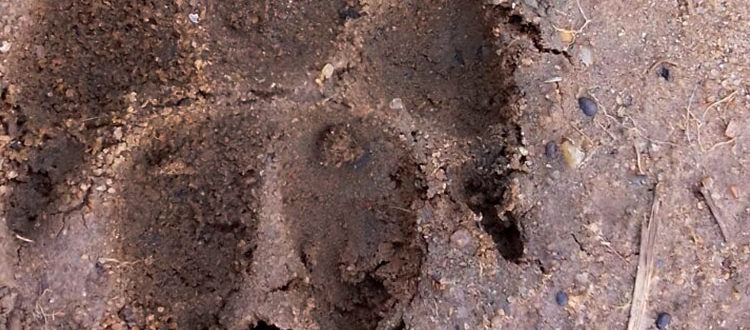Of Rumours, Werewolves and Smaller Predators
By Dr Khanin Changmai, Abhishek Narayanan, and Shudhanta Sood
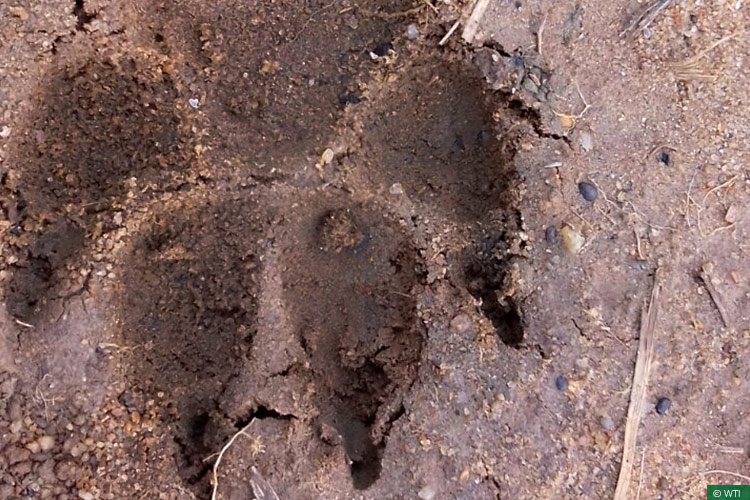
After the mysterious and unexplained mass killings of sheep, rumours of an unknown creature, an alien species – bipedal, tall and skinny, with elongated ears and a wide mouth – began to circulate. Facebook, WhatsApp and the print and electronic media were rife with such news.
The locals were disturbed and fearful: what creature was killing their sheep without leaving a trace of blood, and eating only the soft tissues and viscera from the kills? Many believed it was an evil spirit and that an unknown curse had been cast on Niali.
The story sounded like that of the famous Tsavo Man-eaters: Two maneless brother lions that had famously terrorised construction workers on the Kenya-Uganda railway in 1898.
The media was rife with rumours that an alien species (bipedal, tall and skinny, with elongated ears and a wide mouth) was responsible for the Niali killings.
To Catch a Killer
Over 200 sheep were killed over the past four months in Niali, a tehsil headquarter that lies 44 km from Odisha’s capital city, Bhubaneswar. Niali falls under the Niali Block of the City Forest Division; it has fertile land suitable for growing paddy, sugarcane and many cash crops throughout the year. It is surrounded by several rivers and their tributaries, including the Kandala, Kushabhadra, Hemsagar, Chhinda, Dahikhal and Prachi. High grasses like elephant grass and common reed grass, which are ideal hideouts for lesser carnivores like jackals, wolves and hyenas, can be found in the area.
Most of the killings were recorded from Niali Block, though the first series of killings took place in Khulisa village which falls under the Khorda Forest Division bordering Niali Block. Around 26 sheep were killed in this village and many more injured between April 1 and June 19. The next killings were more sporadic, occurring in 30 households across 10 villages in the Niali area, within a radius of about five kilometres from each location. In all, nearly 150 deaths had been recorded in the area by the beginning of July.
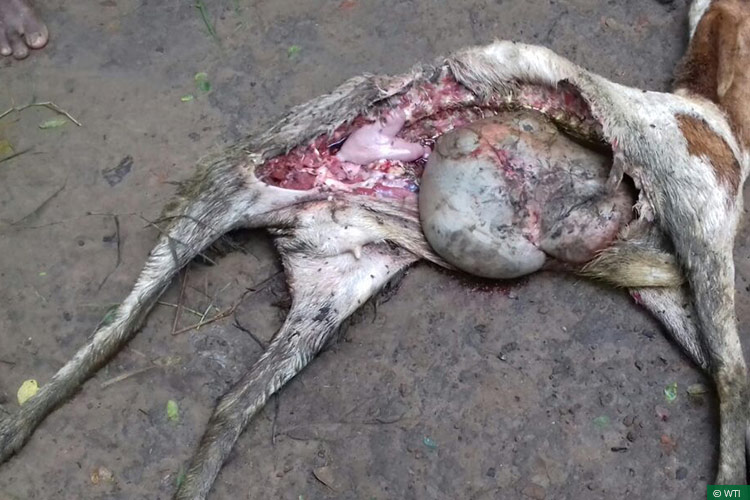
* * *
An 18-member team from Similipal Tiger Reserve was constituted to conduct a planned operation and solve the mystery. The team, led by SK Swain, Divisional Forest Officer – Baripada Division, comprised Dr Khanin Changmai, Veterinarian, Wildlife Trust of India (WTI); Rudra Mahapatra, Regional Facilitator, WTI; three trained members from the Similipal Tiger Reserve Rescue Squad; range officers BK Padhy and SK Mohanty; plus two Foresters and eight experienced members of the Anti-depredation Squad from Baripada Forest Division.
Working with frontline personnel of the Niali City and Khorda Divisions, the team adopted five basic strategies:
-
- Identifying the animal: This, naturally, was the first step: to cut through the rumours and determine what creature was actually behind the killings. A number of camera traps were set up in the vicinity of sheep sheds, as well as on trails linking sheep sheds to possible carnivore hideouts wherever possible. The pugmarks of predators found in and around sheep sheds where the attacks had occurred were also photographed.
- Controlling and restricting the suspected predator’s movements: Continuous night patrolling was initiated between 11pm and 5am around the affected villages, so as to create pressure on the regular movement of the suspected sheep killer. This would also help in getting a conclusive sighting of the predator in and around the affected villages.
- Identification of possible hideouts and flushing out their inhabitants: Hideouts near affected villages were identified with information collected from local villagers. Vigorous combing exercises were carried out by the Anti-depredation Squad and local forest staff. This was done to flush out the animal – presumably a canid (dog-like creature) seen by villagers in the area – and thereby reduce the intensity of attacks and killings. The team also used an unmanned aerial vehicle (quadcopter) to survey the area.
- Opportunistic approaches to capture the suspected predator: During the flushing out and combing process, efforts were also made to capture the suspected sheep killer with nets or through chemical immobilisation. The placement of trap cages with prey animals at night was also planned in select places.
- Creating awareness among villagers: Strengthening sheep houses in the villages reduced the number of killings markedly. Night guarding by owners, whenever possible, also helped. Villagers were asked to shift their sheep and especially the lambs to better fortified sheds in some places.
Capture and Captivity
On the very first night of patrolling, the specially constituted team sighted the suspected sheep killer for the first time. The team tracked the animal, a canid, for three kilometres after sighting it from a distance of 15 feet at around 3am. It was difficult to identify precisely: it could have been a wolf or a jackal, or even a dog.
Attempts to capture the creature were unsuccessful too, considering it was night time and the size of the team was small. The next day, camera trap images were collected and it was concluded that the animal was a wolf or a jackal. Pugmarks found in and around sheep houses in the area pointed to the same conclusion.
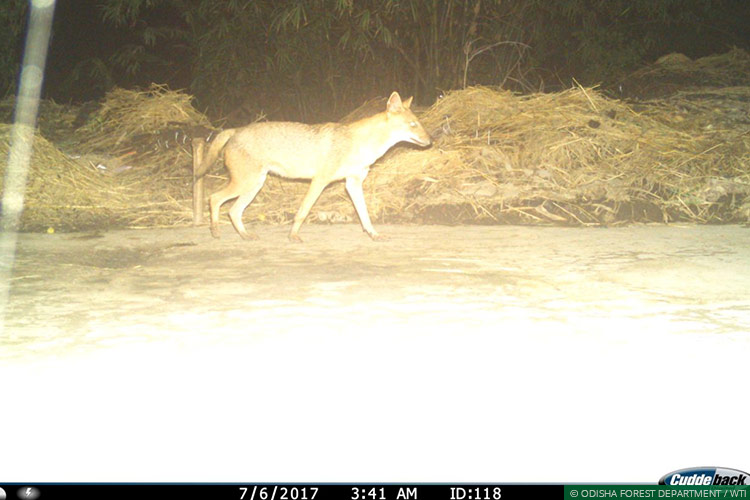
Till July 8 the team worked on collecting more information through camera trap images and pugmarks. Then, on the morning of July 9, news came in that some villagers had captured an animal in a village near Niali. Local forest personnel were called in to identify the animal and reached the location with a transport cage.
The team felt that it was the same animal that had been captured in the camera traps and spotted on the first night of patrolling at Bilasuni village. After its condition was ascertained, the animal was taken to Nandankanan Zoological Park in Bhubaneswar for further care. Owing to some persistent confusion as to the species identity of the captured animal, samples were collected for DNA testing.
Meanwhile, while the team had dispersed from Niali, it had instructed the local forest department staff and villagers to continue patrolling and monitoring the area – it was reasonable to suspect that more than one animal was responsible for the mass killings. On July 14 a team from Wildlife Institute of India, comprising Salvador Lyngdoh, Scientist and Sougata Soudhokhan, Research Fellow, visited Niali to study the case. Finally, on July 25, during one of the night patrols, some villagers and local forest staff saw another dog-like animal trying to enter a sheep shed. In the chase that ensued, the animal fell in an open septic tank. It was later rescued and taken to Nandankanan Zoo.
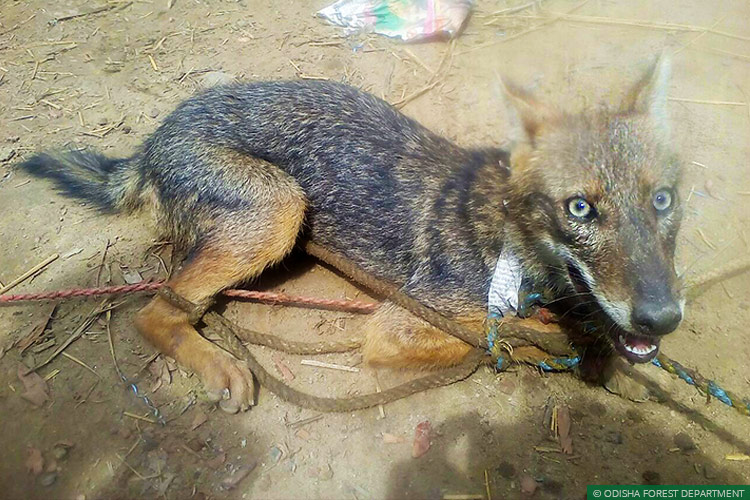
* * *
Although the animals most likely to have caused the mass slaughter of sheep and lambs in Niali have been captured, it is not entirely clear as to why they were hunting alone or killing such large numbers of prey. While wolves – as the two animals have been provisionally identified – are known to consume the visceral organs of their prey, they prefer to hunt in packs.
The captured wolves seem to be young adults who had found easy prey, especially in the absence of an abundant wild prey base. There have been numerous records of wolves attacking and consuming livestock and even some anecdotal stories of ‘child-lifting’. This kind of behaviour, it must be said, has largely stemmed from the anthropogenic pressures that are being exerted on wolf habitats, and consequently, on their prey base.
Not all aspects of the Niali mystery are clear, but it certainly seems that aliens or werewolves weren’t at fault.
It is also interesting to note that the whole incident blew out into quite a spectacle and gained a lot of attention from the local and national media. Perhaps that was why, despite the huge losses that the livestock owners suffered, they did not try to kill the captured animals in retaliation – as has happened in a few instances with leopards and bears. This could also be due to the constant presence and reassurance provided by the forest department and the specially constituted team.
Not all aspects of the Niali mystery are clear, but it certainly seems that aliens or werewolves weren’t at fault. As for the two offending wolves, they have a new lease of life away from persecution and danger, even though they wouldn’t have wished for comfortable captivity under human care. But the very success of their happy nightly hunting sprees turned against them, drawing too much attention. They had their walk-on part in a war exchanged for a lead role in a cage.
Abhishek Narayanan is Manager and Head of WTI’s Wild Rescue Division; Dr Khanin Changmai is the project veterinarian with the division’s Mobile Veterinary Service unit in Similipal Tiger Reserve; Shudhanta Sood is an Assistant Project Officer with the division.

